#incantatory
Text
boso
Naked Girl Twerking
Surrender to Me Whitney Westgate
Hardcore orgy hd and teen porn music video xxx Cory Chase in Revenge
Amateur outdoor sex
Chava guatemalteca virgen en su primera vez
Honey gives delightful titty fuck and handjob during picnic
Mamadas ricas de heidi hasta venirme en su boca y mamarle sus tetas
isle of capri casino campground lake charles louisiana
This ebony thot church lady knows how to throw back
#willyart#jersey's#encephaloscope#groans#林田百加#cokuloris#outgains#outdriving#Streisand#peripheries#scullions#abscised#incantatory#pastoralisation#uncapering#fifth#unprolix#self-contemner#Urginea#Derby
1 note
·
View note
Text
Do you seek to evolve?
Don't you want to change your shape?
Redefine your DNA?
We will share our code as thus...

━━━━━━━━━━━━━
Ѳ⅊εƞ ♇εʀϲε⅊τι⋎ε
⟆ψʍβιɸៜιៜ
Ꮣεαʀƞιƞϑ τհʀι⋎ιƞϑ ϑʀɸwιƞϑ ΒιɸǤƞɸៜιៜ
αβៜɸʀβιƞϑ ɸβៜεʀ⋎ιƞϑ ⅊εʀϲει⋎ιƞϑ Κƞɸwιƞϑ
Μεταʍɸʀ⅊հɸៜιៜ
αϲθυιʀε ʍαƞαϑε ʀεϑεƞεʀατε ៜτʀεƞϑτհεƞ յɸιƞ ៜհαʀε τʀαδε χεƞɸϑεƞεៜιៜ
━━━━━━━━━━━━━
#repeat after me#chanting#bioetheric command codes#incantatory neural programming#spellcasting#epigenetics#morphogenetic field#biokinesis#biohacking#evolve#hypervisual
5 notes
·
View notes
Text

the heart is holy — it refuses to give up what the mind may not be able to remember.
when i was little, i believed that my soul was made up of flame and air; and that it contained a tiny little shard of light, belonging to the person i was destined to be with — my one true love. when we met, he would recognize me by it — and i him, because his soul would possess a tiny little piece of me too. we would find ourselves in each other. watching this episode felt like being a little girl again, falling back in love with the idea of love. when emily brontë wrote: "whatever our souls are made of, his and mine are the same," she probably never would have imagined it would become the dream of many a hopeless romantic — but for sol and sunjae, it's their bittersweet reality.
sol's and sunjae's spirits are intertwined — they will seek each other out no matter where they are or what they're doing. in whichever life. in whatever universe. their souls are made up of the same fine dust; you can see the inner glow every time they cross paths with each other. you can see that little shard of light find its home at last.
the parallels in this episode were beautiful — each place that was special to sol and sunjae appeared again; they met in them — and even with sunjae's memory gone, those areas still carried the psychic pulse of their love. as cassandra clare said: "there's something about a place you've been with someone you love. it becomes more than a place. it becomes a distillation of what you felt for each other. the moments you spend in a place with someone... they become part of its bricks and mortar. part of its soul."
sol and sunjae are candles to each other's flame — divine mirrors. in one life, he wrote sonaki for her and she never knew what she meant to him. in another, sol made their love into art and he had no idea how deeply he affected her. in every lifetime, they owe each other their existence. sunjae being underwater in his dreams, still searching for sol — the currents of the past, the undertow of their shared history: they're inescapable.
sol and sunjae are inevitable — he was always meant to lock gazes with her, lose himself in her laughter; the incantatory spell of her smile. she was always meant to end up in his arms; the weight of her agony helplessly giving way to her love. the gentle heartbreak of their last scene on the ferris wheel: it reminds me of poet june jordan: "i am my soul adrift / the whole night sky denies me light / without you."
to whatever end, sol and sunjae are meant to be together. to whatever end.
#lovely runner#byeon woo seok#kdrama#kim hye yoon#tvn drama#tvn lovely runner#kdrama lover#tvn#fantasy kdrama#rom com kdrama#ryu sun jae#im sol
46 notes
·
View notes
Text
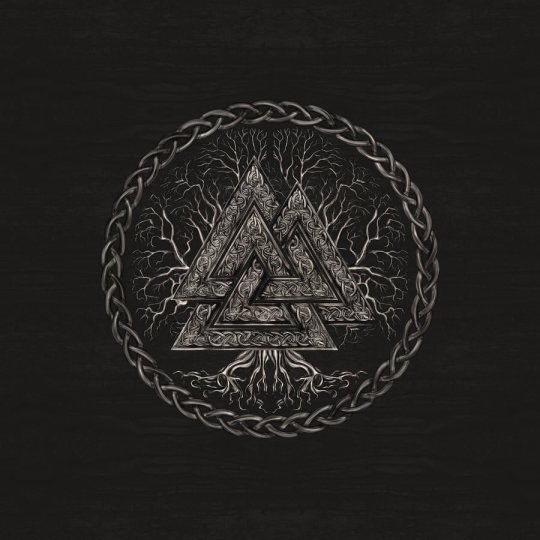

ANCIENT SCANDINAVIAN MAGICAL WORDS
alu ᚨᛚᚢ
The most common - and most, as is commonly believed, powerful - incantatory rune word. Perhaps it goes back to the most ancient northern European basis al, meaning magic power, magic in general. The magical use of the word was probably very varied. The most general interpretation is as follows - “Dedication; magical power and power; wisdom".
Several modifications of this spell are known; here are some of them: slalu - a variant supplemented by the rune of power and victory; folslalu is a complex variant known from the bracteate from Fakse; halg alu is another complicated variant, the meaning of which is restored with great difficulty.
sar ᛊᚨᚱ
Also a very common sacred word. A possible reconstruction of the meaning is “wandering in search of Power”, which should be understood not only literally, but also figuratively.
auja ᚨᚢᛃᚨ
This word itself means “luck”. The use of this word as an incantation has, accordingly, the purpose of bringing good luck.
gibulauja ᚷᛁᛒᚢᛚᚨᚢᛃᚨ
Complicated version of the previous word. This is a combination of two words meaning “to give good luck” or “to give good luck." It is important that in this version the Gebo rune appears, corresponding to the meaning of the spell as a whole.
laþu ᛚᚨᛒᚢ
A very common incantatory word; the connection of the word with an ancient stem with the meaning of “invitation”, “invocation.” This is one of the sacred words that were part of invoking spells.
laukaz ᛚᚨᚢᚲᚨᛊ
Many researchers associate this sacred word with the ancient scandal laukaz “wild onion”, which was a sacred plant and was revered as having great magical power, mainly of a protective, protective nature. Therefore, the word has a similar direction of action. However, it should be borne in mind that LaukaR is perhaps one of the oldest variants of the name of the rune Laguz, which should also be borne in mind when using this sacred word.
The names of those who practiced the Nordic Tradition also served as words of power: Erilaz - the lord of the runes; Gothi clergyman, priest; Vitki - magician, sorcerer, lord of the runes. Inscriptions - good wishes also have magical properties. The main traditional concepts are the following: Alag, "presence, influence”, Auja- “luck”, Gina- “endowed with divine power” attacks ”.
Ancient Icelandic magic words
keþa (Keþa’s) - “help of the graves” - meaning patrimonial protection
Ale - “beer, full cup” - prosperity
þaliR - “falcon, man” - courage, courage.
hararar - “agile, fast” - speed and strength
baijar - “magic” - magical power
laiþigar- “hatred, trouble” - disgusting
Halar- “stone” - resilience
viðr- “forest” -connection with nature
wiðugastir - “master” - another designation of eril
hús - “house”
ladawarija - “protected by the earth” - protection from the earth (meaning that the spirits of the earth will protect).
lönnruner- “cache of runes” - knowing the secret contained in the runes.
faikinar ist - “visited by witchcraft” - empowered
raunijar - “one who tries” - trying his hand
siklisnahli- “helping fire” - protection of the spirits of fire
teitr- “happy” -happiness, happy
elska - “love, beloved” - understanding, love.
(Adapted from L. Peschel. A Practical Guide to the Runes. St. Paul, 1996)
Valknut
There are numerous variations of the Valknut, although two specific configurations are by far the most common styles found. The first is the tricursal variant. This features three triangles interlocking with each other, each with their own separate shape. The second variant is unicursal, using a singular line to create the three interconnected triangles.
58 notes
·
View notes
Note
What do you think about the Waves by Virginia Woolf ?
i absolutely love love love love loved The Waves--it took me forever to read and i think it was taxing in a way too because the rhythm is so distinct; it's very much a book you need to take slowly and also meet on its own terms but oh god when you do!! the incantatory shimmering net of her prose !!! the stunning visual intensity she has (i don't know if i've come across a more visually alert writer (maybe banville); i distinctly remember woolf describing a dragonfly at some point like a darting stitch which to this day remains one of the most searingly accurate instances of language i've ever read) !!! this kaleidoscopic flow of voices, sounds, feelings...the motion throughout the whole book of moving within time then out of time, which is to say from time (days, hours etc) and into Time (historic time, recollected time, internal time as its felt not necessarily lived) and then back again--from the particular to the expansive, from painful isolation that can't seem to ever be broached to the interconnectedness that runs through all the book's voices--they're like disparate strings that are so distinct from each other and yet you also cannot sever them from one another either, i don't think: whenever the characters come together, even through their pettiness and misunderstandings, even through the nebulous notions of "self-hood" the book looks at ("Who am I? I have been talking of Bernard, Neville, Jinny, Susan, Rhoda, and Louis. Am I all of them? Am I one and distinct? I do not know."), there's this dazzling chorus that takes over the page which is just astonishing to read for me.
there is very little that is fixed in this book and while there is very much a sense of being tossed about, it never feels chaotic or haphazard to me because the mere fact of the book's fluidity and the recurring motion (either in its layout or in the images and the lines that keep getting repeated) is the one (relatively) solid thing that runs through it. it's fragmented in an amazingly cohesive way which is, i guess, what being is like: there is an individuality that is both here and not here, not unlike the constant interplay of light and shadows. i remember after reading it there was this line by octavio paz that i kept thinking of where he says "all is visible and all elusive, / all is near and can't be touched" which sums up so much of The Waves for me. it's a book that you kind of have to let happen to you, and even then i think it's something that one reading is nowhere near enough for! but anyways, yes, i loved it. a lot!!!
#v dear friend of mine said woolf is someone who never seems to put a word wrong and he's right entirely#ask#anonymous#book talks
127 notes
·
View notes
Text
Brìghde Chaimbeul — Carry Them With Us (tak:til)

youtube
First of all, for any interested non-Gaelic speakers, the young Scottish piper’s name is (per her own site) pronounced “Bree-chu CHaym-bul.” And secondly, while the music found on this, her third album, sounds like what most would identify as bagpipes, it’s… well it is and it isn’t. To the extent that bagpipes are known to the wider world it’s something like the great Highland bagpipe (musician blowing into a reed, pipes extending over shoulder). Chaimbeul can certainly play that too, but she specializes more in the Scottish smallpipes, a bellow-driven instrument of more recent vintage (the 80s!) albeit from a lineage going back hundreds of years. The details are worth noting up front, because the music on Carry Them With Us is so viscerally enchanting it might be hard to keep track of them once you’re mid-listen.
Both varieties of bagpipe share some seemingly contradictory qualities. Drone instruments that (due to the various chanters used and other aspects of their design) can handle complex, fast-moving melodies; intensely analogue devices that, due to their precision and lack of sonic decay, can feel almost electronic in nature. Capable of simultaneously evoking melancholy and spritely joy, one on its own, played well, can fill a whole room with sound almost to the point of oppression. Unsurprisingly for a musician who’s been winning awards since she was a teen, Chaimbeul is an exceptional player of the smallpipes and from the opening blast of “Pililiù: The Call of the Redshank” these 35 minutes practically put on a clinic on why any listener might want to get to know them.
Not that Chaimbeul is strictly solo; after Canadian saxophone dynamo Colin Stetson reached out to her about a documentary soundtrack, the two of them wound of working together on six of the nine tracks here. If you’ve never previously considered the way sax and bagpipe might sound like each other, or take on similar roles, or complement each other, their completely natural fit here might take you aback. Stetson fans are well aware of the head of steam he can build up, but Chaimbeul’s no slouch either; a track like “Tha Fonn Gun Bhi Trom: I Am Disposed of Mirth” already feels delirious before you notice Stetson’s whirling flutters unspooling in the background. Even when their roles diverge more, like the impossible to miss saxophone tessellations towards the end of “’S Mi Gabhail an Rathaid: I Take the Road,” they feel like kindred spirits.
The most notable element aside from Chaimbeul’s pipes and Stetson’s sax is her voice, singing in Gaelic. It only shows up a few times but it’s an arresting presence whenever it does. Maybe if you speak the language it turns out she’s singing about something more mundane, but based on the song titles here and the incantatory, almost vatic feeling those passages bring to the rest of the music it’s hard not to feel like there’s something of deep significance being passed on. Like the rest of Carry Them With Us, it's intensely striking.
Ian Mathers
#Brìghde Chaimbeul#Carry Them With Us#tak:til#ian mathers#albumreview#dusted magazine#smallpipes#drone#folk#saxophone#colin stetson#gaelic
55 notes
·
View notes
Text
His sad and scholarly works breathed a strange magic, an incantatory charm which stirred you to the depths of your being like the sorcery of certain of Baudelaire’s poems, so that you were left amazed and pensive, disconcerted by this art which crossed the frontiers of painting to borrow from the writer’s art its most subtly evocative suggestions, from the enameller’s art its most wonderfully brilliant effects, from the lapidary’s and etcher’s art its most exquisitely delicate touches.
— Joris-Karl Huysmans, Against Nature, transl by Robert Baldick, (2003)
11 notes
·
View notes
Text

The Nobel prize in literature has been awarded to 64-year-old Norwegian author Jon Fosse “for his innovative plays and prose which give voice to the unsayable”. His works include the Septology series of novels, Aliss at the Fire, Melancholy and A Shining.
“His huge oeuvre, spanning a variety of genres, comprises about 40 plays and a wealth of novels, poetry collections, essays, children’s books and translations,” said Anders Olsson, chairman of the Nobel committee for literature. “Fosse blends a rootedness in the language and nature of his Norwegian background with artistic techniques in the wake of modernism.”
“I am overwhelmed, and somewhat frightened. I see this as an award to the literature that first and foremost aims to be literature, without other considerations,” Fosse said in a statement.
He also told the Norwegian public broadcaster NRK that he was “surprised but also not” to have won. “I’ve been part of the discussion for 10 years and have more and less tentatively prepared myself that this could happen,” he said.
Jacques Testard, Fosse’s fiction publisher, said on hearing the news: “He is an exceptional writer, who has managed to find a totally unique way of writing fiction. As his Norwegian editor Cecilie Seiness put it recently in an interview: if you open any book by Jon and read a couple of lines, it couldn’t be written by anyone else.
“His fiction is incantatory, mystical, and rooted in the landscape of the western fjords where he grew up,” Testard added. “It’s very important to remember that he writes in Nynorsk or New Norwegian, a minority language in Norway, a political act in itself. He’s also an exceptional playwright and poet. He’s an incredible mind, and it couldn’t have happened to a nicer person.”
The Norwegian writer’s English translator Damion Searls said he is thrilled Fosse’s work will now find an even wider audience. “I first brought Fosse’s fiction into English almost 20 years ago. I read Melancholy in German and immediately felt that the work was brilliant and needed to be translated. I found an American publisher and a co-translator, and started learning Norwegian”, he told the Guardian. “I have since translated around 10 books of his, depending on how you count them, including a libretto, a play and a forthcoming children’s book.”
Though the author and translator mostly communicate via email and hadn’t met in person until the 2022 International Booker prize events in London, Searls considers Fosse a friend. “He is the same kind, wise, modest, friendly, supportive person over email as you would expect from his novels, and corresponding with him has always brought me the same kind of peace and serenity his novels so magically impart.”
Born in 1959 in Haugesund on the west coast of Norway, Fosse grew up in Strandebarm. Aged seven, he nearly died in an accident, which he said was “the most important experience” of his childhood and one that “created” him as an artist. In his adolescence, he aspired to be a rock guitarist, before turning his ambitions to writing.
His debut novel, Raudt, svart (Red, Black), was published in 1983. His first play to be performed, Og aldri skal vi skiljast (And Never Shall We Part), was staged at the National Theater in Bergen in 1994. Yet, the first play he wrote, Nokon kjem til å komme (Someone Is Going to Come), would lead to his breakthrough in 1999 when French director Claude Régy staged it in Nanterre.
Fosse went on to become the most-performed Norwegian playwright after Henrik Ibsen. He has written more than 30 plays, including Namnet (The Name), Vinter (Winter) and Ein sommars dag (A Summer’s Day). His longer works include the Septology trilogy, the third volume of which was shortlisted for the international Booker prize in 2022.
Septology, which Fosse started during a pause from playwriting and after converting to Catholicism in 2013, is about an ageing painter, Asle, living alone on the south-west coast of Norway and reflecting on his life. There in Bjørgvin lives another Asle, who is also a painter but struggles with alcohol. The doppelgangers are consumed by the same existential questions about death, faith and love.
In 1989, the same year that Fosse’s novel Naustet (“Boathouse”) came out, the writer taught the fellow Norwegian author Karl Ove Knausgård, who was a student at the Academy of Writing in Hordaland. “Fosse’s voice is unmistakable in whatever he writes, and is never anything if not present,” wrote Knausgård in 2019.
Fosse’s UK publisher is Fitzcarraldo Editions, which also publishes Annie Ernaux, the winner of the 2022 Nobel prize in literature. Fosse’s win marks the London-based independent publisher’s third win in five years: Olga Tokarczuk was made laureate in 2018. The prize was postponed and awarded in 2019 instead due to a sexual assault scandal involving the husband of one of the academy’s former members which led to several members resigning.
Fosse resides between Austria and Norway. He will receive the prize at a ceremony in Stockholm on 10 December. He will receive 11m SEK (£821,209), up from 10m SEK awarded last year.
Daily inspiration. Discover more photos at Just for Books…?
37 notes
·
View notes
Photo
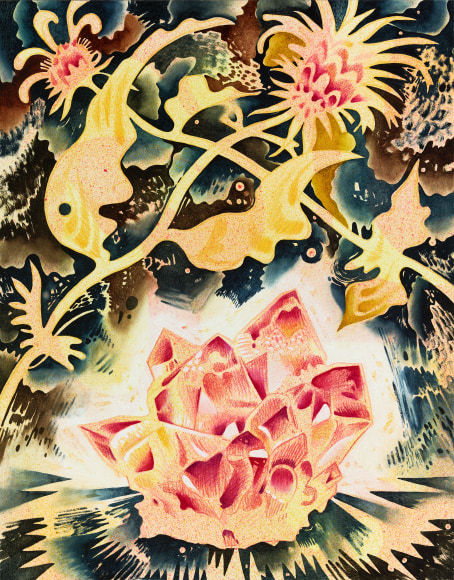
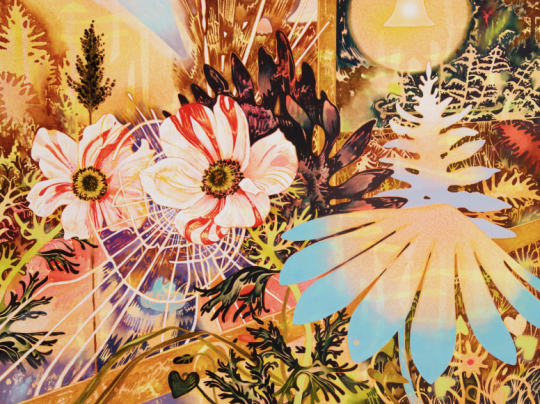



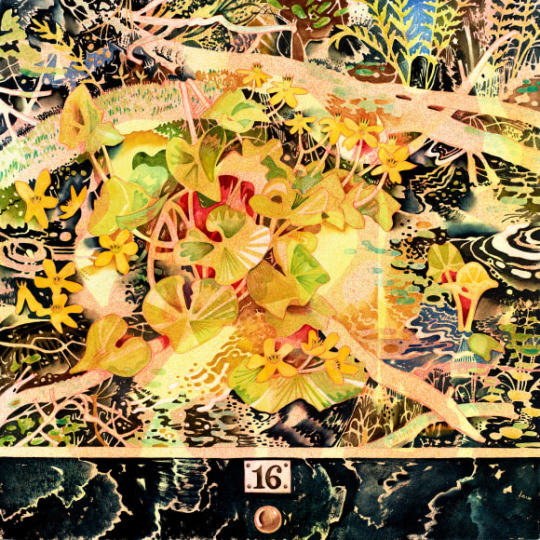
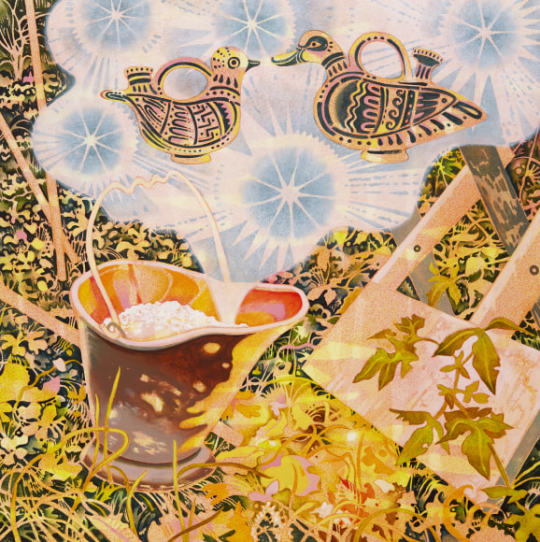

Hilary Irons received her BFA in painting from Parsons School of Design and her MFA from Yale School of Art.
She says, "I envision the landscape as a vessel that contains a story of restless searching. Images of my parents' land, storms and rain, broken ladders, and stars breaking through clouds are built by filling the spaces between things with color and darkness. Trees, paths, streams, waterfalls, windows, and lightning come forward with a dull glow as negative-space constructions, holding the power of that which is absent.”
Hilary Irons paints wondrous, exquisitely rendered visionary scenes that teem with nature in concert with the man-made. Plants, animals, houses, household items, and references to art history coexist in a harmonious, incantatory world. Her radiant images appear lit from within. Positive and negative shapes blend seamlessly into the other, creating tapestry-like patterns extending beyond the compositions' edges.
She works on wood panels with a mixture of oil, acrylic, colored pencil, and marble dust, diluting the pigments until they have the appearance of watercolors. The translucency of her medium, combined with the marble dust, adds to their transcendental nature. In this sense, Irons carries forward the modernist spiritual explorations of early-twentieth-century artists Charles Burchfield and Agnes Pelton.
https://www.dowlingwalsh.com/artists/hilary-irons
59 notes
·
View notes
Text

Rune singers Iivana Onoila and Jelisei Valakainen in Terijoki, 1911.
Runesong is a genre of folk music, or a form of oral poetry, historically practiced among the Baltic Finnic peoples. Originating in the Finno-Ugric belt from the Urals (Russia) to Finnskogen (Parts of eastern Norway and Sweden). With the oldest songs being over 4000 years old, the runesong often has a religious content, partly incantatory, but can also have a historical summary content with myths. Some of the incantations were linked to the desire for protection and healing, i.e. the medical rune chants.
#upload#runesong#finnic peoples#finno ugric#forest finns#finnskogen#1900s#1911#rune singers#history#nordic history#tried to summarise it as good as i can most info being from wiki#and photographer is unknown
15 notes
·
View notes
Text
Incantation Magic
(Just some thoughts, not meant to be comprehensive, barely even coherent)
Incantatory magic to me is an elegant simplicity of words strung together in order to commend oneself to the protection and favor of divinity. The appeal to the spirits is a call to come forth, to guard the petitioner. The words themselves build around the caster as an armor - the words tell a story and, in the telling of it, makes story come to life by mimicking the events in the present time; a sort of microcosm, macrocosm effect. By telling the stories of the spirits (Christian or not), the speaker is viewed literally as calling down the essences, the spirits, of those same stories - seen as very real and independent beings with their own agency and arsenal - to enact upon themselves. Therefore, if the gods hold divine weapons and armor, the petitioner calls upon the gods to loan them the use or power of such instruments of fortitude and protection.
Healing magics by way of incantation weave similar stories to different effect. A charm might tell the story of an injury and how a god or spirit (often a saint) cured it. In this instance, the caster is asking to be loaned the same ability - essentially letting that spirit guide their hands to undertake the healing in the same way that spirit once did. Another form uses the stories of magical items, similar to the lorica (breastplate). The item's story is told and mimicking actions may take place during the recitation to pull on the power of the item itself and its history.
Incantatory storytelling is also used to drive out spirits that may be harmful, banishing them. In this case, the caster uses scenarios in their story that are either "impossible" or hearken to specific realms of spirits, place locations. Either way, it serves the purpose of sending it back or sending it away to a place that either doesn't exist or that cannot be escaped from (the impossibility, the non-existence, creates a perfect trap). By impossibility, it's not just a place that does not exist but also specific scenarios that would never happen. For example, in order for that spirit to be released a condition would need to be met that could never be met. It would be released on a date that would never occur, or under a circumstance that could never happen.
The storytelling aspect of incantation lends history and credence, adding weight to the words. Naming the gods or spirits involved is an immediate way to connect to them, to garner their interest, to appeal for their aid, and to put some of their power to the words being spoken and it's intended effect - if they decide to assist, that is.
"Apportioning" by incantation was used in similar fashion as the method of banishing I've described above, but by driving out the spirit of a sickness or the evil eye using a combination of various locations and repetition. The incantations would describe sending away the illness or spirit causing illness/misfortune to various places - a portion to the mountains, a portion to the rocks, a portion to the hills, a portion to the sea, and so on. By doing this, the purpose was to divide up the affliction or spirit and the "pieces" would be so many and so scattered, the malevolence would have no hope of ever reforming itself.
Symbolism within the words points to the powers ascribed to the being who is called upon for aid. Columkille portrayed as standing astride land and water denotes power over both land and sea. God being referred to as the King of Elements conveys his power as ultimate, dominion over all the elements and therefore, all else that falls under them. Charms calling upon Michael or Patrick evoke their strength, while Brigid and Mary are often called on for healing. Christ's baptism features in several healing charms meant to stop blood flow, and Christ himself is called upon by saints in healing charms - Peter's toothache, and Lucy's eyes. Brigid in particular is called for the protection of cattle and livestock but is also appealed to during childbirth as the midwife of Mary and foster-mother of Christ, and there may even have been a time when Brigid was appealed to as a healer of sight and eye-related injuries. As the spirit's regional folklore grew, so did their repertoire.
#wren rambles#folk magic#folk charms#healing magic#banishing and protection#incantation#under the roses#traditional witchcraft#witchcraft#fairy faith#personal praxis
132 notes
·
View notes
Text
COLM TÓIBÍN
Restlessness: A Syllabus
I am interested in texts that are pure voice or deal with difficult experience using a tone that does not offer relief or stop for comfort. Sometimes, the power in the text comes from powerlessness, whether personal or political. Sometimes, death is close or danger beckons or violence is threatened or enacted. Sometimes, there is a sense of real personal risk in the text’s revelations. Sometimes, there is little left to lose. All the time, the tone is incantatory or staccato or filled with melancholy recognitions.
Euripides, Medea
Sophocles, Electra
Sophocles, Antigone
Sylvia Plath, Ariel
Louise Glück, The Wild Iris
Anne Carson, Autobiography of Red
Juan Goytisolo, Forbidden Territory
Joan Didion, A Book of Common Prayer
Oscar Wilde, De Profundis
Nadine Gordimer, The Late Bourgeois World
Ingmar Bergman, Autumn Sonata
John McGahern, The Barracks
Béla Tarr and Ágnes Hranitzky, The Turin Horse
Doris Lessing, The Grass Is Singing
J. M. Coetzee, Age of Iron
Béla Bartók, Bluebeard’s Castle
Constance Debré, Love Me Tender
7 notes
·
View notes
Text

eyes shift from their melancholy grey to a soft blue as they turn towards the auburn , normally shied visage painted with something a bit more akin to a brilliance. nature itself was something that appease every edge of the painters mind , as its glory in color and vast reactive atmosphere left the imaginative state of Hwei at full pique. for nature showed colors even he could never bring forth with such a mind as his. the edges of twin flesh curl upward in slight , her suggestion filling his chest with a warmth that he could never put into words for her.
❛ the idea sounds grand. ❜ soft spoken he was , there was a teetering excitement dancing along the end of his sentence. gentle is his hand to reach forward , thin fingers light in their curl around her wrist to pull her along. each step , slow in approach yet graceful in its own way , to lead towards the pelting of water that fell so beautifully from the sky. a halt in steps and gaze turns upward , peering upon the grey-blue sky. there , he felt more alive , as soft rumbles elated the space and rain slid down youthful appearance. that smile from before , growing ever more. ❛ go on. dance. i will watch. ❜ @empyreous

KILLING LONELINESS. A magnificently sublime and utterly resplendent afternoon unfurled, bedecked in the opulent hues of an enraptured cosmos. The ascendant narrative, normally adorned in the gilded filigree of sunbeams, relinquished its sovereign jurisdiction to a symphony of liquid melancholy, wherein raindrops, akin to effulgent celestial serenaders, descended from the immortal vault, delicately pirouetting with a serpentine grace, nourishing the terrestrial expanse in a chorus of sapphire grandeur. “A-Anou…” She felt her exquisite frame being pulled by him. His enthusiasm at her suggestion bewildered her.
The celestial cantata echoed with staccato percussion upon the translucent parasol of existence. Rivulets, akin to transient veins of liquid argent, inscribed sinuous arabesques upon the cobblestone boulevards, a convoluted testament to the dance of dreams forsworn. Beyond the aquatic prism of rain-streaked windows, the world metamorphosed into an ephemeral opus, a pandemonium of luminous hues intermingling in a frenetic fugue of vibrant decadence. Each raindrop, a fleeting crystalline sphere, refracted the dimming luminescence into a hallucinogenic scherzo, casting an incantatory spell of bewitchment upon the quotidian. “Won’t you dance with me?” Orihime felt the petite, strong droplets kiss her persona as they ventured outside, sensing God's baptism.
The fragrance of rain, an olfactory sonnet of unparalleled opulence, wafted through the aether, saturating the senses in the earthy embrace of grandiose resurgence. Amid this aqueous ballet, emotions surged forth in a passionate concerto of ineffable nostalgia. The heart, a forgotten reliquary in the attic of reminiscence, vibrated with the rhythmical reverie of raindrops, each resonance a maelstrom of moments elapsed, drenched in the intoxicating masterpiece of impermanent ECSTASY.
———— And so, as the rain continued its languorous descent, she started moving, pirouetted, and ascended in the torrential downpour, sublime, feeling an epiphany of pleasure and liberation. Raindrops shimmered like diamonds on her porcelain dermis, and her locks blazed like a scorching INFERNO, a radiant sign. Azure hairpins flickered in the grandeur, as if they were conscious and frolicking with her in cadence. Inoue beamed, giggled, letting the rain obliterate her troubles and reticence. The primordial muse, a magnum opus of nature and art, a stellar design dancing for HIM. Movements were elegant and smooth, like a swan soaring on a turquoise reservoir. Amber hues were hypnotizing, like the sun bursting through the charcoal clouds—a golden line. “Come, dance with me.” A palm was offered to the other.

6 notes
·
View notes
Text
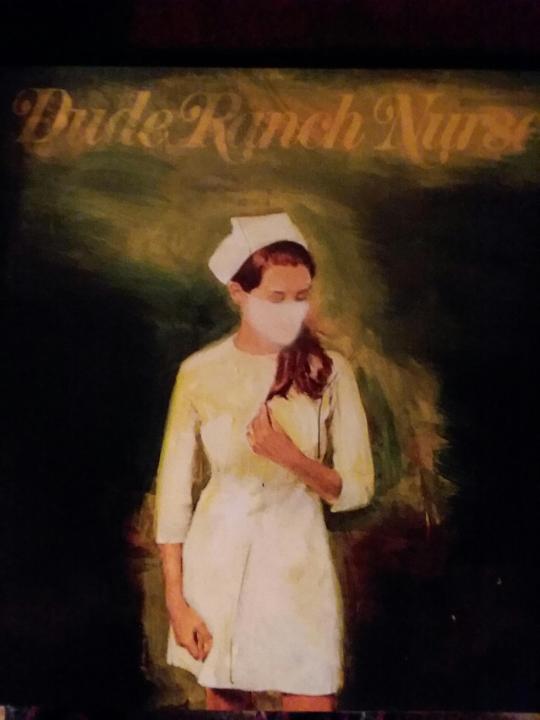
Sonic Youth - Greenspace, Valencia, Spain, October 28, 2005
One more trip to the Dude Ranch! This entry in the #SonicSummer extravaganza comes toward the tail-end of "The Jim Years." Soon, O'Rourke would bid adieu to Sonic Youth, eventually leaving the USA entirely for the Steamrooms of Japan. It was nice while it lasted — and this slightly overdriven Spanish broadcast shows that Jim left the band on a musical high note.
It's a slightly truncated festival set — but SY makes the most of their onstage time, adding a little extra energy and rambunctiousness to the proceedings. The Sonic Nurse material is still sounding rad, with a tightly wound "Stones" and an extremely explosive "Pattern Recognition" leading the way. Elsewhere, an off-the-rails "Mote” blends beautifully into a kraut-tastic "New Hampshire."
The evening in Valencia concludes with a truly unique happening — a fiery free-form jam with legendary Flamenco vocalist Enrique Morente. Cante jondo! Morente's incantatory stylings might seem like an odd fit for Sonic Youth's shards of noize, but by the end of this 13-minute trip, you might wish they had made an entire album together.
Bandcamp | Merch | Concert Chronology
8 notes
·
View notes
Text
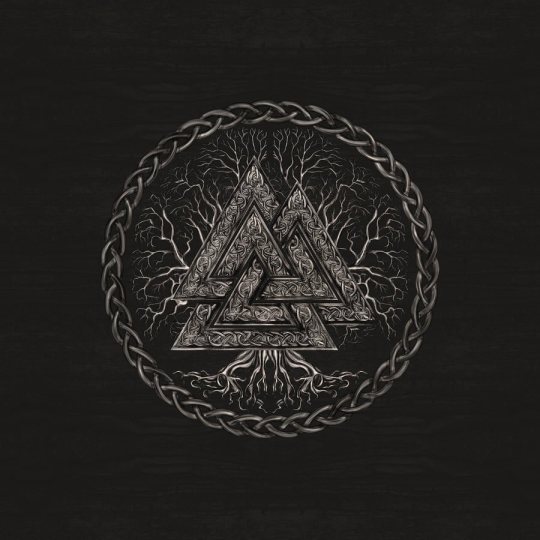

ANCIENT SCANDINAVIAN MAGICAL WORDS
alu ᚨᛚᚢ
The most common - and most, as is commonly believed, powerful - incantatory rune word. Perhaps it goes back to the most ancient northern European basis al, meaning magic power, magic in general. The magical use of the word was probably very varied. The most general interpretation is as follows - “Dedication; magical power and power; wisdom".
Several modifications of this spell are known; here are some of them: slalu - a variant supplemented by the rune of power and victory; folslalu is a complex variant known from the bracteate from Fakse; halg alu is another complicated variant, the meaning of which is restored with great difficulty.
sar ᛊᚨᚱ
Also a very common sacred word. A possible reconstruction of the meaning is “wandering in search of Power”, which should be understood not only literally, but also figuratively.
auja ᚨᚢᛃᚨ
This word itself means “luck”. The use of this word as an incantation has, accordingly, the purpose of bringing good luck.
gibulauja ᚷᛁᛒᚢᛚᚨᚢᛃᚨ
Complicated version of the previous word. This is a combination of two words meaning “to give good luck” or “to give good luck." It is important that in this version the Gebo rune appears, corresponding to the meaning of the spell as a whole.
laþu ᛚᚨᛒᚢ
A very common incantatory word; the connection of the word with an ancient stem with the meaning of “invitation”, “invocation.” This is one of the sacred words that were part of invoking spells.
laukaz ᛚᚨᚢᚲᚨᛊ
Many researchers associate this sacred word with the ancient scandal laukaz “wild onion”, which was a sacred plant and was revered as having great magical power, mainly of a protective, protective nature. Therefore, the word has a similar direction of action. However, it should be borne in mind that LaukaR is perhaps one of the oldest variants of the name of the rune Laguz, which should also be borne in mind when using this sacred word.
The names of those who practiced the Nordic Tradition also served as words of power: Erilaz - the lord of the runes; Gothi clergyman, priest; Vitki - magician, sorcerer, lord of the runes. Inscriptions - good wishes also have magical properties. The main traditional concepts are the following: Alag, "presence, influence”, Auja- “luck”, Gina- “endowed with divine power” attacks ”.
Ancient Icelandic magic words
keþa (Keþa’s) - “help of the graves” - meaning patrimonial protection
Ale - “beer, full cup” - prosperity
þaliR - “falcon, man” - courage, courage.
hararar - “agile, fast” - speed and strength
baijar - “magic” - magical power
laiþigar- “hatred, trouble” - disgusting
Halar- “stone” - resilience
viðr- “forest” -connection with nature
wiðugastir - “master” - another designation of eril
hús - “house”
ladawarija - “protected by the earth” - protection from the earth (meaning that the spirits of the earth will protect).
lönnruner- “cache of runes” - knowing the secret contained in the runes.
faikinar ist - “visited by witchcraft” - empowered
raunijar - “one who tries” - trying his hand
siklisnahli- “helping fire” - protection of the spirits of fire
teitr- “happy” -happiness, happy
elska - “love, beloved” - understanding, love.
(Adapted from L. Peschel. A Practical Guide to the Runes. St. Paul, 1996)
71 notes
·
View notes
Photo
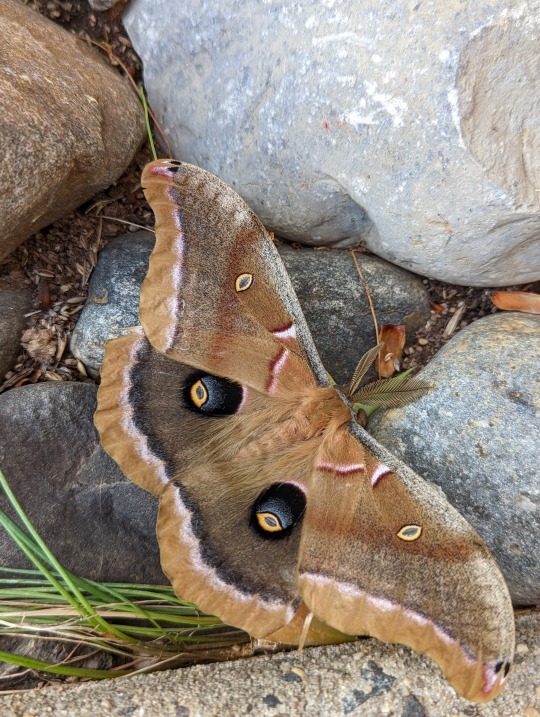
@toomintheellimist submitted: No ID necessary, just thought you'd like to see a nice Polyphemus.
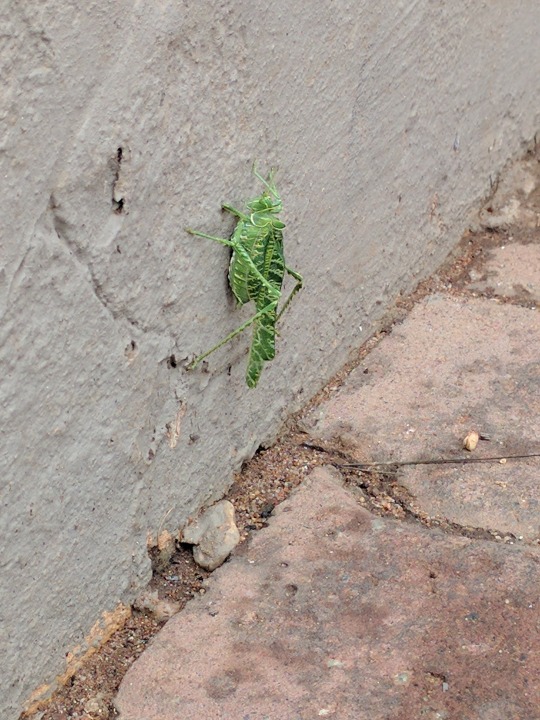
Saw this amazing Zebra Katydid while in South Africa several years ago.
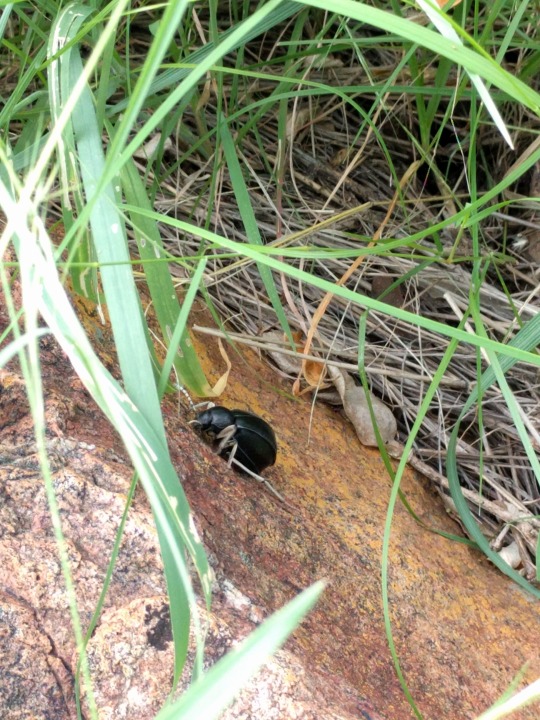
Ok last one, also from the same trip to South Africa, a White-Legged Toktokkie (Dichtha incantatoris).
You were correct, I always want to see a polyphemus moth :) The zebra acacia katydid is beautiful! I bet they camouflage very well on acacias. The beetle is super cool as well, I’ve never had one submitted! Great finds, thanks for sharing :)))
#insects#bugs#submission#moth#polyphemus moth#saturniidae#katydid#zebra acacia katydid#beetle#darkling beetle#whiteleg toktokkie
111 notes
·
View notes